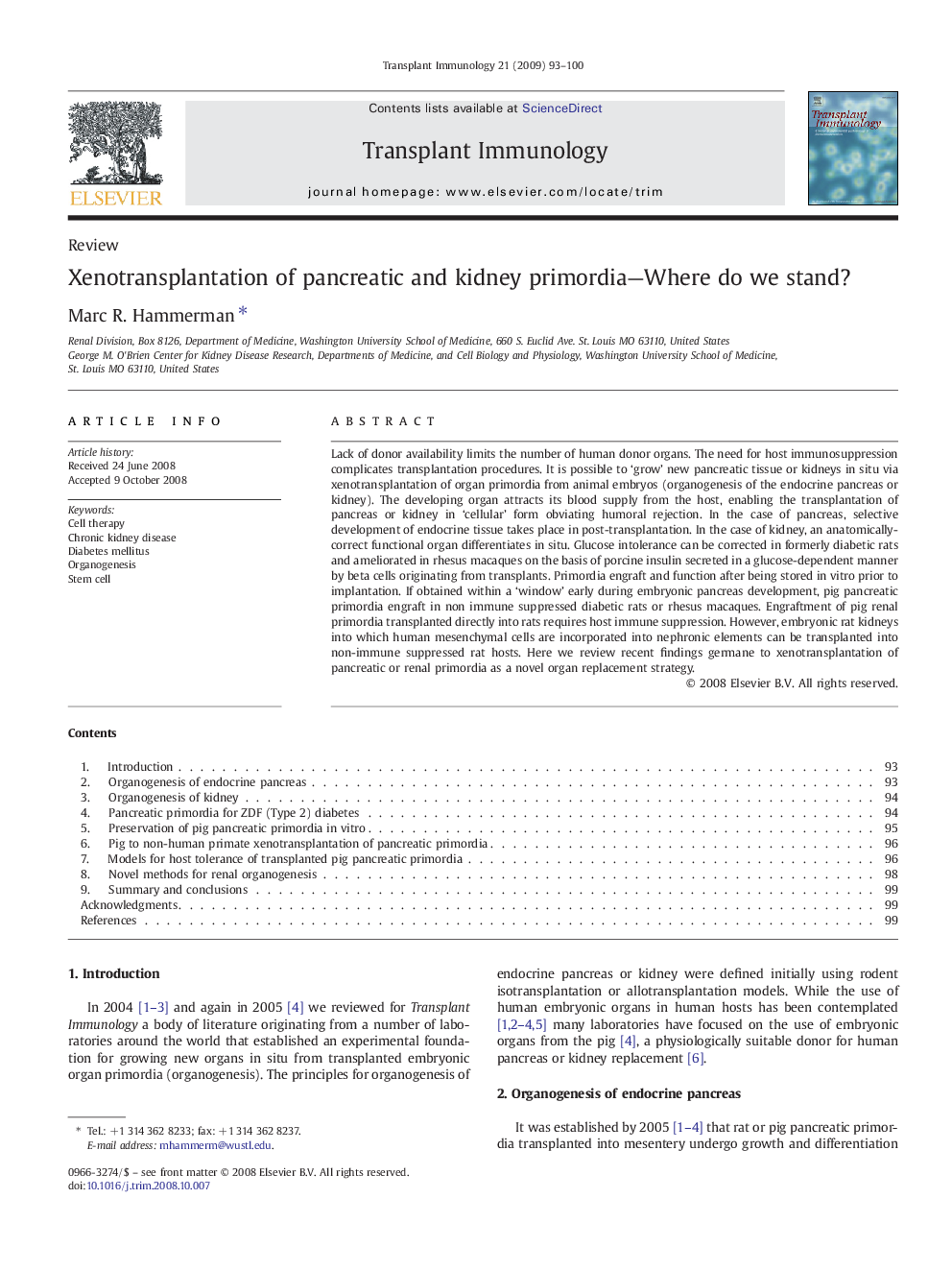| کد مقاله | کد نشریه | سال انتشار | مقاله انگلیسی | نسخه تمام متن |
|---|---|---|---|---|
| 3392307 | 1221211 | 2009 | 8 صفحه PDF | دانلود رایگان |

Lack of donor availability limits the number of human donor organs. The need for host immunosuppression complicates transplantation procedures. It is possible to ‘grow’ new pancreatic tissue or kidneys in situ via xenotransplantation of organ primordia from animal embryos (organogenesis of the endocrine pancreas or kidney). The developing organ attracts its blood supply from the host, enabling the transplantation of pancreas or kidney in ‘cellular’ form obviating humoral rejection. In the case of pancreas, selective development of endocrine tissue takes place in post-transplantation. In the case of kidney, an anatomically-correct functional organ differentiates in situ. Glucose intolerance can be corrected in formerly diabetic rats and ameliorated in rhesus macaques on the basis of porcine insulin secreted in a glucose-dependent manner by beta cells originating from transplants. Primordia engraft and function after being stored in vitro prior to implantation. If obtained within a ‘window’ early during embryonic pancreas development, pig pancreatic primordia engraft in non immune suppressed diabetic rats or rhesus macaques. Engraftment of pig renal primordia transplanted directly into rats requires host immune suppression. However, embryonic rat kidneys into which human mesenchymal cells are incorporated into nephronic elements can be transplanted into non-immune suppressed rat hosts. Here we review recent findings germane to xenotransplantation of pancreatic or renal primordia as a novel organ replacement strategy.
Journal: Transplant Immunology - Volume 21, Issue 2, June 2009, Pages 93–100